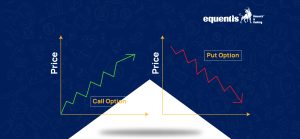Introduction:
Financial markets constantly evolve, bringing new trading techniques and strategies to invest better. These innovations offer you distinct ways to manage risks and seize opportunities in the market. One such technique is the bracket order, an advanced type of order gaining traction among investors and traders alike. In this article, we will discuss what bracket order is, itspurpose, how itworks, and why it has become a valuable tool for traders and those seeking better stock portfolio management.
What is a bracket order?
A bracket order is a combination of three limit orders: the initial order, a stop-loss order, and a target order. Here, limit order means buying or selling the security at a fixed price or better instead of trading at the prevailing market price. For instance, if a share price is Rs.100, and you anticipate a fall, you can place a limit order to buy the share at Rs.95. The order will automatically get executed if the price hits Rs.95.
The three components of the bracket order include-
- Initial order:
Based on your market analysis and strategy, you start by placing an initial or entry order to buy or sell. This order specifies the price level for entering the market.
- Target order:
You can place a target order at a point where the trade moves favourably and generates profits. This order sets a specific price to exit the trade and book your profit. When the market reaches this target price, the order is automatically activated, closing the trade with the profits.
- Stoploss order:
To limit potential losses, you set a stop-loss order. This order activates if the trade moves against your position and reaches a predefined price. The stop-loss order then automatically exits the trade, capping the losses at the predetermined level.
The initial order can be a buy or sell, while the other two are opposite. For example, if the first order is a buy order, the stop-loss and target orders are sell orders, and vice-versa. Of the three, only one gets executed along with the initial order, resulting in either a profit or a loss. So, if the initial order is not placed, the other two won’t be either, as they are limit orders, not market orders. Moreover, the third-party platforms enable you to place such orders without any bracket order charges.
How does a bracket order work?
Let’s understand the bracket order meaning better with this example. Say you place an initial or original buy order at Rs.50 per share. You also set a target order at Rs.55 and a stop-loss at Rs.48. The initial order executes only when the market price reaches Rs.50. This is like defining the floor and ceiling for an anticipated profit or loss situation. Now, there are three possible scenarios-
- The initial buying order will be executed at Rs.50, and you will enter the position. Now, if the price goes up and reaches Rs.55, the sale will automatically take place, and you will book a profit of Rs.5 per share.
- After the initial order, if the prices fall to Rs.48, the stop-loss is activated, and you incur a loss of Rs.2 per share.
- If you place an initial limit order of Rs.50 and the price doesn’t reach the level by the end of the trading day, the whole bracket order is cancelled since it is an intraday order and does not carry over to the next day.
But the concept sounds similar to that of a cover order. Are both the same?
Difference between bracket orders and cover orders:
Both bracket and cover orders help mitigate the risks involved. However, the primary difference between the two is the combination of orders. The bracket order combines three components, whereas a cover order has just two- the initial limit order and the stop loss order. The bracket order focuses on both the profit-taking factor and the limiting loss factor. On the flip side, the cover order focuses more on limiting the loss in a trade. It is a simple tool suitable for you if your primary motive is to limit loss in your trade. However, with bracket orders, you have the added advantage of automating profit booking at a set target.
Benefits of bracket order:
- By placing three trades at once, you can limit your risk and potential loss using a stop-loss order. If the trade hits the loss limit, your stop loss order executes, and the profit-making order is cancelled.
- A trailing stop loss offers an additional advantage by automatically adjusting stop-loss orders to track the market price. Trailing stop loss allows you to put a stop loss order not with a particular price but with a percentage or certain rupees away from the initial order price. Thus, as the prices move, the stop loss limit adjusts and stops when the prices get stable. This feature helps in locking in profits while protecting against losses.
- You can also book profits with a predetermined profit objective price order without continuously monitoring the market. The entire process is hassle-free, simple, and efficient, making it highly attractive for traders.
Though the bracket order is a convenient tool for safe trading, it can get complex due to the multiple price level settings. Its adaptability to dynamic market conditions is limited, which may lead to difficulties in a highly volatile market. Sometimes, it is also possible that you took an early exit from a trade because of the tight set limits. Nevertheless, you can mitigate these setbacks if you place the order errorlessly.
Read More: Can The 15x15x15 Rule Help You Become a Crorepati?
Common mistakes to avoid in bracket orders:
- Inaccurate Price Levels:
Failing to conduct a thorough market analysis before placing a Bracket Order can lead to poor entry and exit decisions. Identify clear entry and exit points using technical indicators, trends, and other relevant factors. Without solid analysis, you risk starting with a disadvantageous position and even setting tight stop-loss levels. Ensure the limits allow your trades breathing room to accommodate regular price movements.
- Unrealistic Profit Targets:
Setting overly ambitious profit targets may cause missed opportunities and premature trade exits. Profit targets should be attainable and align with the market’s historical volatility.
- Ignoring Recent News:
Staying informed about upcoming news releases, economic events, or company announcements is crucial. Unexpected news can impact the market and invalidate predetermined profit targets or stop-loss levels. Be aware of such events and adjust your Bracket Order accordingly.
Know More:What is Folio Number? Understanding What It Means To Investors
Conclusion:
Bracket order is a convenient tool for efficiently taking calculated risks in trades. However, the stock market demands a thorough understanding of all its specifics, including other technical indicators like momentum oscillators and candlestick charts. Combining all these with a bracket order strategy ensures you make sound decisions, keep emotional trading off the table, take calculated risks, automate your trading strategies and protect your capital from significant losses.
*Disclaimer Note: The securities quoted, if any, are for illustration only and are not recommendatory. This article is for education purposes only and shall not be considered as recommendation or investment advice by Research & Ranking. We will not be liable for any losses that may occur. Investment in securities market are subject to market risks. Read all the related documents carefully before investing. Registration granted by SEBI, membership of BASL, and certification from NISM in no way guarantee the performance of the intermediary or provide any assurance of returns to investors.
FAQ
What is cover and bracket order?
Bracket and cover orders are used in intraday trading by securities market investors. Bracket orders combine three orders, entry, target, and stop loss, to maximize profit and minimize loss. Cover orders, on the other hand, combine two orders: an initial order and a stop-loss order.
How do you set a bracket order?
First, you place an initial order to enter a position. Next, you set a target order, which is a profit price you are expecting and also place a stop loss order, which is the loss limit you set for the trade. So, suppose you are buying a stock at Rs.100 with an initial order. You expect the prices to reach Rs.102.25, so you set the target order at Rs.102.25. Then, for a stop loss order, you can either place a direct stop loss level at Rs.98 or set it as a trailing stop loss at 1%. The orders will automatically be executed based on price movements.
What is the difference between a cover order and a bracket order?
A cover order focuses on limiting the loss, whereas a bracket order adds an advantage to profit booking with the target order.
How to pay less tax?
There are numerous ways to lower your tax liabilities. With respect to reducing your taxes on investment gains, the easiest way is to invest in tax-saving instruments and keep investing with a long-term horizon in mind.
How useful was this post?
Click on a star to rate it!
Average rating 3 / 5. Vote count: 2
No votes so far! Be the first to rate this post.
I’m Archana R. Chettiar, an experienced content creator with
an affinity for writing on personal finance and other financial content. I
love to write on equity investing, retirement, managing money, and more.
- Archana Chettiar













